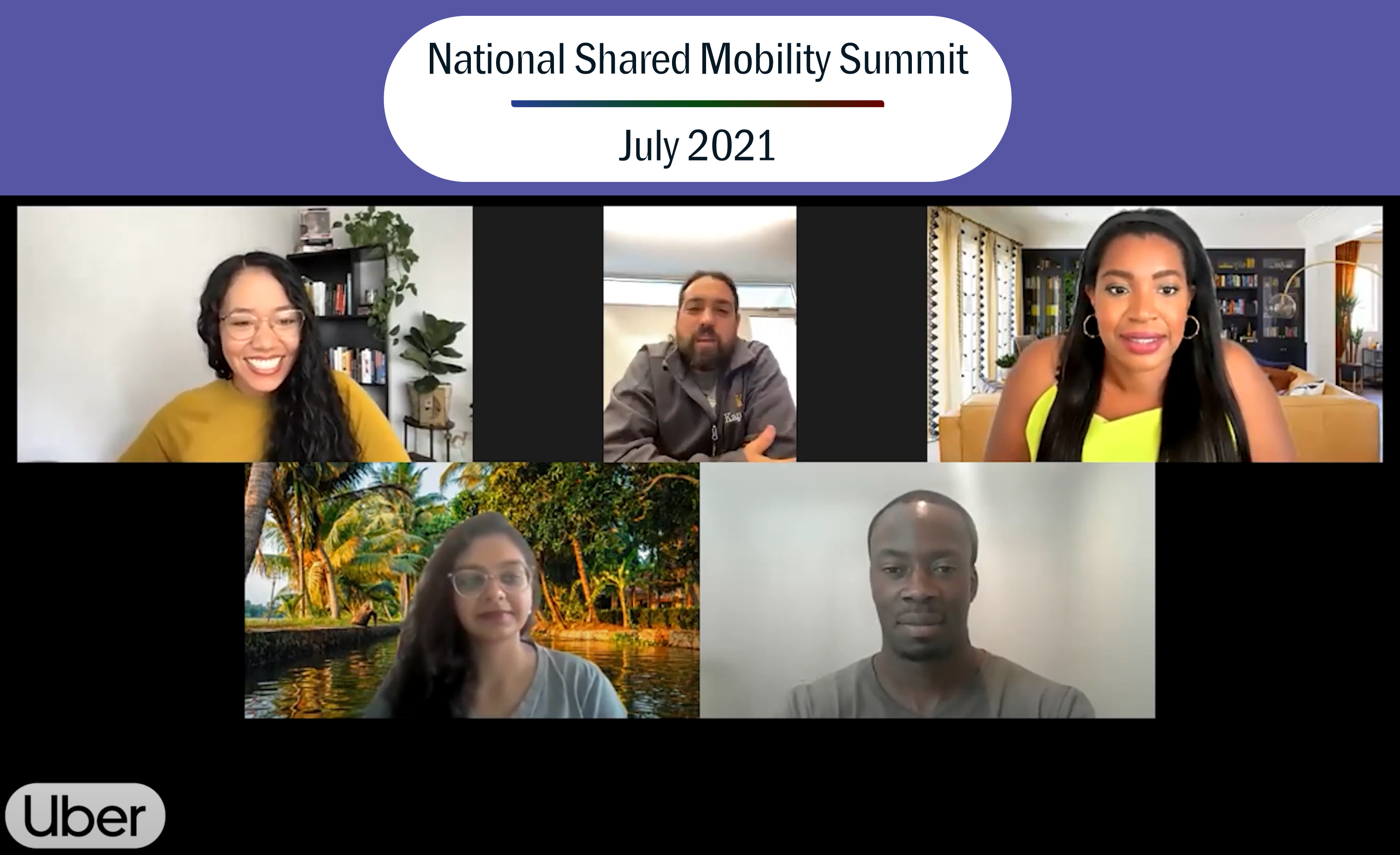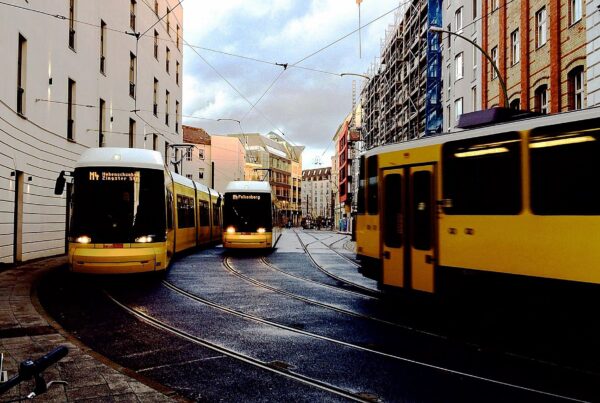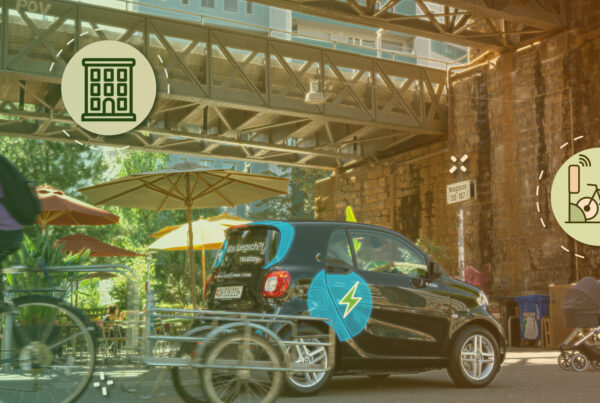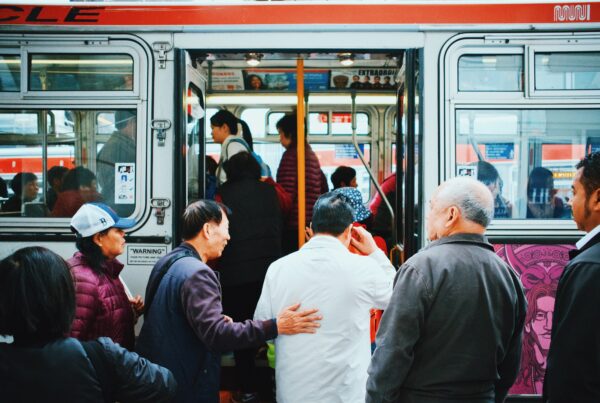The Mobility Hub
Your weekly guide to the latest in shared mobility
SUMC News and Announcements
WATCH SUMMIT RECORDINGS OF WEEKS ONE & TWO
Week One Focus: Physical and Informational Systems
Week Two Focus: Financial and Funding Systems
Last month, over 90 diverse speakers, hosts, panelists, and thought leaders ignited discussions about how we can shift the system—the WHOLE SYSTEM—towards sustainability and equity. We’d like to thank every voice for making these conversations so memorable that we’re still listening and learning, and Uber for sponsoring these recordings. We’ll wrap up with weeks 3 and 4 in the next few weeks.
Visit the 2021 National Shared Mobility Summit Playlist on YouTube.
If you attended, tell us what you thought. If you didn’t, tell us why not.
Take the 2021 National Shared Mobility Summit Survey.
“Bikes and bikeways aren’t just for wealthier people – they’re for everyone.”
Jeremy Cuebas, Youth Organizer, Northwest Side Housing Center
On Aug 13, the ribbon was cut on the Belmont Cragin neighborhood’s first Divvy e-bike station- with an additional 25-30 Divvy e-bike stations and a bikeway network to follow courtesy of the Chicago Works Infrastructure Plan. The Westside Chicago community is predominantly low-income, Latino, and has no “L” transit access.
The 2021 Mobility Justice Spotlight (MJS), part of this year’s Summit, gave the neighborhood’s Northwest Side Housing Center Youth Council the microphone so they could show the transportation reality that demands these updates and share their efforts to bring equitable bikeshare to Belmont Cragin. Their nominator was Romina Castillo of Muse Community Design.
Watch the MJS with the Northwest Side Housing Center Youth Council.
Read a recap of the festivities in Streetsblog.
New on the SUMC Learning Center:

Mobility Justice
There’s a reason why that highway in your city is where it is, and the decision to put it there was rooted in and driven by racism. Whether outright or shielded, white political leaders’ biased agendas, supported by the 1956 Federal-Aid Highway Act, forced out and divided communities of color and “the people with the least power were the ones who were hurt.”
And here’s an example. Read Amy Stelly’s account of the destruction the Claiborne Expressway had on her New Orleans community, also in the Washington Post.
Pandemic or not, low-income workers overwhelmingly depend on the bus to get to their jobs, and microtransit has shown to be a crucial connector that fills first- and last-mile transportation gaps—and it’s here to stay.
PODCAST: TransLoc’s The Movement interviews TransitCenter’s Steven Higashide, author of Better Buses, Better Cities, about the need for multi-racial coalitions to spearhead policy and ensure equitable, accessible transit access.

Ridehailing/Carsharing/Carpooling
What is it like to be an Uber driver in the pandemic? Listen to this week’s Rideshare Rodeo Podcast to learn why the gig workers left and what it might take to bring them back.
Uber and Lyft have their eyes on their prize: profits—and they’re getting closer. But with astronomical prices (50% higher), a lack of drivers, and safety concerns, the issue isn’t necessarily company profits but how many riders decide to kick the apps and buy single-use cars instead.
Roll your eyes at any outrageous car ads recently? Submit them to Streetsblog’s America’s Most Toxic Car Commercial and it could win the bracket-based voting competition (prize being spreading awareness of how society has glorified car use).

Bikesharing & Micromobility
Case Studies on Transport Policy found that bikeshare ridership in Boston tripled on routes that installed separated bike lanes while the Journal Of Transport Geography found that the leading reason people chose to cycle was time of day, followed by precipitation. Compare, contrast, and learn.
Aspen, CO is taking advantage of their sunny altitude by piloting WE-cycle and Skyhook Solar’s first-of-its-kind, solar-powered e-bikes (juiced up at solar-powered charging stations) that increase bike efficiency, reduce bike downtime and make the bikes even greener.
Micromobility just got even easier with Google Maps and Spin partnering to allow users on Google Maps to locate the company’s vehicles, see the travel time to the vehicle, the estimated battery range, and estimated arrival time. And it’s already in 84 cities.

Transit
Traveling from Chicago to St. Louis in 2 hours on public transit may soon be a real possibility. Illinois Governor J.B. Pritzker signed legislation to accelerate development of a high-speed rail line between the two cities that, combined with existing Amtrak rail services and bus lines, can take you far beyond.
Everyone must use public transit if we’re going to prevent global warming from getting worse than 1.5°C, which is bad enough, in 2030. But what will it look like? Tomorrow.City sees smart ticketing, the hyperloop, wind-turbine energy, and shared and on-demand transport (aka Mobility-as-a-Service).
The New York MTA is looking to restart capital projects put on hold during the pandemic, including the next phase of the Second Avenue Subway, more electric buses, and accessibility upgrades at stations—but is 1.9% of the infrastructure bill enough for the nation’s largest public transportation system?

Technology
Your eyes aren’t deceiving you—there’s another driverless car on the streets of NYC. Mobileye’s first autonomous vehicle has been testing since June with another coming in September and 7 in the next few months, enough to cause the DOT to issue new regulations for vehicle operators.
We have electric buses! Now what? University of Utah researcher and associate professor Xiaoyue Cathy Liu has developed an open-source, web-based modeling tool for the next step: ensuring that electric buses are deployed equitably.
Multimodal trip-planning app Transit is launching, Royale, a subscription service—starting at $24.99/yr. with a free option for those in need—in cities where there is not a local transit partnership (that’s coming in 2022). Core features like next departures, trip planning, mobile ticketing, and multimodal integrations stay free for everyone.

Sustainability
Biden asked OPEC and Russia to increase oil production, declined to block a series of oil pipeline projects, and approved drilling on leased federal land, yet the administration “is pursuing the strongest climate policy of any administration in U.S. history.” What gives? Politics, says Politico.
What was going to be a major win for transit and the environment is stuck in limbo…again. Congestion pricing, a way to discourage solo driving, cut carbon emissions, and generate revenue for mass transit, was first approved by Cuomo. But with his resignation, incoming governor Kathy Hochul must approve it—and implementation would still take 2 more years.
After devastating environmental events, the Colorado Department of Transportation has proposed a rule that requires themselves and 5 metropolitan planning organizations to estimate the total carbon emission impacts of future transportation projects, and any emissions over a set budget have to be offset.
Project Funding Opportunities
RFI: Next Generation Paratransit System
The Delaware Transit Corporation (DTC)
Deadline: September 10
Email [email protected] for the RFI package
RFP: Human Services Transportation Plan
Central Florida Regional Transportation Authority (Lynx)
Orlando, FL
Deadline: September, 10
Zoom for Details: August 18 at 8 PM ET





